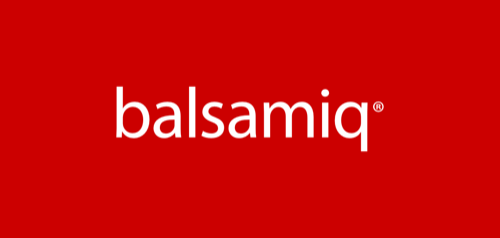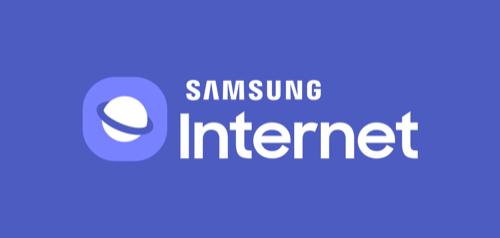Transcript
Hi, I'm Lola Odelola and today I'm going to be talking to you about using storytelling techniques in your technical communication. But first, a little bit about me. I am a web developer advocate at Samsung internet, and if you've never heard about Samsung internet before, that's perfectly okay. We are an Android based web browser and available on all Android.
Platforms, basically you can get in the play store. And we have features that are aimed at power users and people who are privacy aware with things such as ad blocking and track and prevention, which are both on by default. And we have a fully customizable interface. So you can tweak things to your liking.
I am also the co-chair of the WCC developer county. So let's get into things now, before we get too deep, let's define some things. So that we're all on the same page, right? What is technical communication? Well, according to Wikipedia, they define technical communication as communication that is used to convey scientific engineering or otherwise technical information.
And so. If you have ever tried to learn how to code, you've engaged with technical communication. I think that's pretty obvious. If you've had to build furniture, you've probably engaged with technical communication. If you've had to read a manual of any kind, if you've read any technical blog posts or magazines or news articles, if you watched a WWDC earlier this week, these are all examples of technical communications.
And most of us have probably engaged with technical communication in some way. So what is storytelling then? Well, storytelling is the social and cultural activity or sharing stories. Pause right there for a moment, because I think it's important to highlight that school we tenant is cultural. And so our stories are informed by the culture we exist and live in.
Right. And so we have to be mindful of that, especially when we are telling stories in a culture that we are not a part of, we have to be mindful of what their cultural implications are for the things that we say, like, how do they understand the things that. That's just a caveat. And I wanted to put in there, the definition goes on, the story is an account of a series of related events or experiences, which is just to say, one thing happens, which causes another thing.
And then that other thing causes another thing and it goes on and on and on until the end of the. So in preparation for this talk, I really wanted to dive in and understand what the science of storytelling even is in the first instance, right? Like why do we care so much about stories? Why do we enjoy stories so much?
And I got three main points. I read a lot and I assume. Synthesize the benefits, not the three things, right? Storytelling promotes, increased, recall stories, also associated with better information where you caught and comprehension, which is to say, when you tell a story, you're more likely to remember it.
And you're more likely to understand it as a listener, right? Like the audience is more likely to remember it. And that answer is more likely to understand whatever information you're presenting. If it's told in story form. Another thing is that stories include. Empathy sharing stories creates bonds between the storyteller and the listener.
And there's a really cool experiment that was done that emphasizes this right. Scientists took a woman who speaks English and Russian, and they hooked her up to an MRI machine and they took listeners, volunteers who only understand English and hooked them up to, uh, MRI machines. And as this woman told a story in English, uh, their brains literally.
In relation to her. So for example, if she was at an exciting part of the story, their brains also lit up as she was excited, they were excited in their brains, right. She was afraid in her brain. They were afraid in their brain and she was happy in her brain. They were happy in her brain. So there's this kind of like synergy synchronization happening.
Right. But it only happened when she told the story in English, but she told the story in Russian and that brain activity did not have the same movement. It wasn't the same. There wasn't that synchronization. And what we can kind of gain from this is when you are able to experience the emotions of the person, telling the story, when the audience is able to experience the emotion of the storyteller.
That's a great avenue for empathy. That's a great way to build empathy between the two groups, right? And finally stories have stories enable meaning-making stories. Usually give the context necessary for listeners and readers to form an understand meaning. And again, another great example is this of this would be fables, right?
Fables which you story to kind of show or teach a lesson to get usually an got children's to understand bigger picture things. Right? When we are able to understand the context, um, that informs a main characters decision or informs a consequence of an action, we are able to make meaning, and often we are able to apply that meaning to our own real life situation.
So why should we use storytelling in commune in technical communication? Well, first and foremost, people are biased towards stories. When you think about it, a lot of the information you consume is done. So through storytelling, whether that's through the news, whether that's through social media, Or even listening to music, right?
Storytelling is into woven into just almost every fabric of our life. Um, and a really interesting thing that I read was from Michael Bostrom in his paper, using narratives and storytelling to communicate science with non expert audiences. That's about four, but he says non-experts get most of their science information from massive media content, which in itself is already biased towards narrative form.
Narratives. I'll also intrinsically persuasive, which offers science, communicators tactics for persuading, otherwise resistance audiences. And I think a good example of when we saw this in action and real life action was during the beginning of the COVID pandemic, right. There was a lot of. Noise going on, but we know that with the science communicators and doctors came out and started sharing stories of people who had experienced COVID-19 what their symptoms were, how they felt when we had families of people who had experienced COVID-19 come out and say how they saw it happening.
And you know, how they. Seeing a family member of experience COVID-19 or how they felt experiencing COVID-19. You started to see a shift in just like the cultural understanding of things that that shift did not permeate through all facets of society. But we saw how storytelling was an important vehicle in getting people on board with the preventative measures needed to combat COVID-19 stories.
Also cut through information clutter. There is so much noise out there, especially in the age of the internet, where everything is tips and a good story, engages audience from the get-go and cuts through all of that noise. So what storytelling techniques can we actually use in our technical community? So the first thing we can do is mixing the ration with exposition.
What do I mean by that? Well, a lot of technical communication uses exposition. This is, this is that. And so on and so forth, right? When we mix narration, we add a nice layer of depth to our writing or to whatever communication where. An example of this would be to use case studies using case studies are written in first person where the writer says I used this product and felt this way.
That's a good way to mix an aeration in with exposition, or I found this thing difficult, and this is how I. Solved it, when you have a blog post that is written by someone who has encountered a problem and found a solution to that problem, they are usually using the ration to explain how they came to solutions to that problem.
Another thing to consider is to experiment with media. There are already so many brilliant creative technologists out there who are already doing this and who are branching out into comics, into animation, into YouTube creators, into podcasts. And so, so many different ways of, um, communicates and technical information.
Right. And it's really up to you to decide what medium does your communication best lend itself? It may not always be appropriate to have something that's solely in a written format. It may be more helpful to have. And something written or a comic and a video or something written that addresses one thing and a podcast that expands on that thing, mixing and experimenting with mediums is another way to engage users through storytelling.
Finally, consider sharing the consequences. Actions, which is something that's Peter's storytelling is conflict and conflict is usually a main character does something. And the consequences of that thing are shown to the audience. That's what conflict is conflict without the consequences isn't conflict.
And so we want to show what the consequences are of people, either using our products or an operating system and doing something they shouldn't do, or just a product or system doing something that it shouldn't. What happens, show us. And then just tell us, show us too, whether that's the diagrams or the video show us demonstrates us what happens.
So those are my tips for implementing storytelling techniques in your technical communication. You can follow me on Twitter @LolaOdelola, and thank you very much for watching.





